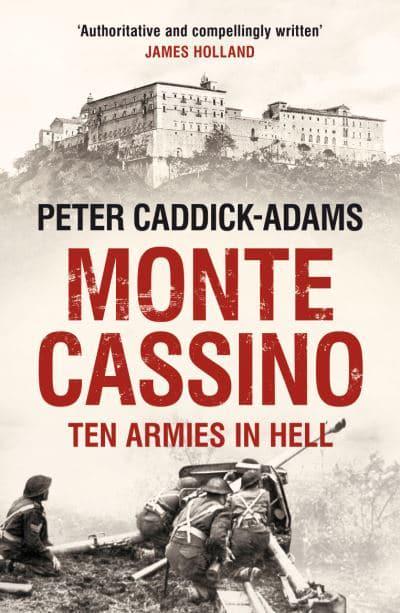Monte Cassino : Ten Armies in Hell
Usually shipped within 24 hours
UK deliveries from £5.95
Delivery & Returns
Delivery & Returns
We use the Royal Mail, DHL Express or UPS for our customers. For UK addresses, deliveries under 10kg are a standard £4.95 via Royal Mail Tracked 48 Service. For orders over 10kg and overseas customers, postage is calculated for you at checkout once you have entered your postal address. This price, does not include any potential custom charges that may apply, depending on the product or destination, as every country has very different import duties / taxes. Online exclusive products (such as trainers) will be delivered to you directly from the printer, separate from other items in your order, but your postage fee covers ALL items in your order.
If you are unhappy with your purchase, please email shop@tankmuseum.org within fourteen (14) working days of receiving your goods, and return it to us at the address below, in its original condition, unopened (with any seals and shrink-wrap intact) and we will issue you a full refund or replace it. Goods must be returned at your own cost. If the item is faulty, you do not need to return it, we will send you a replacement free of charge.
Description
Description
By Peter Caddick-Adams
The five-month Monte Cassino campaign in central Italy is one of the best-known European land battles of World War Two, alongside D-Day and Stalingrad.
It has a particular resonance now, because Cassino, with its multitude of participating armies - most notably the American 5th Army under the controversial General Mark Clark - was perhaps the campaign of the Second World War that most closely anticipates the coalition operations of today, with its ever-shifting cast of players stuck in inhospitable, mountainous terrain, pursuing an objective set by unknowing politicians in distant capitals, where victory is difficult to define.
Monte Cassino was characterised by the destruction of its world famous Abbey: in retrospect, considered an unjustifiable act of cultural vandalism by the allies. The audit trail of decision-making to destroy an icon as well known then as the Eiffel Tower or Lincoln Memorial, is a chilling reminder that similar decisions are still being made in Iraq and Afghanistan and indeed Libya.
To this day, reversing normal prejudice, German troops are welcome in the abbey, having rescued its treasures from allied destruction in February 1944. Cassino was an unusual campaign for World War II in that its outcome was not reliant on sweeping movements or the use of tanks or aircraft - but by old-fashioned boots in the mud, whether capturing the town of Cassino after months of grinding urban warfare (a Stalingrad in miniature) or scrambling up the steep mountain to seize the heights and the religious complex on top of Monte Cassino.
Monte Cassino Abbey was painstakingly rebuilt after the war (its baroque chapel remains incomplete) and is now a World Heritage site.
An hour south of Rome, it is visited each year by up to one million tourists and pilgrims from around the world.
![Monte Cassino : Ten Armies in Hell Book [variant_option4]](http://tankmuseumshop.org/cdn/shop/products/9780099568674.jpg?v=1748336824&width=1214)

![Monte Cassino : Ten Armies in Hell Book [variant_option4]](http://tankmuseumshop.org/cdn/shop/products/9780099568674.jpg?v=1748336824&width=88)
![Tank Museum Playing Cards Game [variant_option4]](http://tankmuseumshop.org/cdn/shop/files/ProductShoot_10_10_2025035.jpg?v=1760358498&width=176)
![Tank Museum Wrapping Paper - White - Two sheet pack Wrapping Paper [variant_option4]](http://tankmuseumshop.org/cdn/shop/products/Wrapp_Paper_All.jpg?v=1748337915&width=176)
![Monte Cassino : Ten Armies in Hell Book [variant_option4]](http://tankmuseumshop.org/cdn/shop/products/9780099568674.jpg?v=1748336824&width=640)



